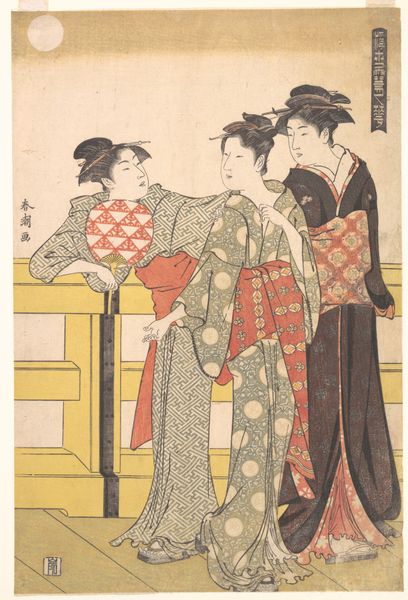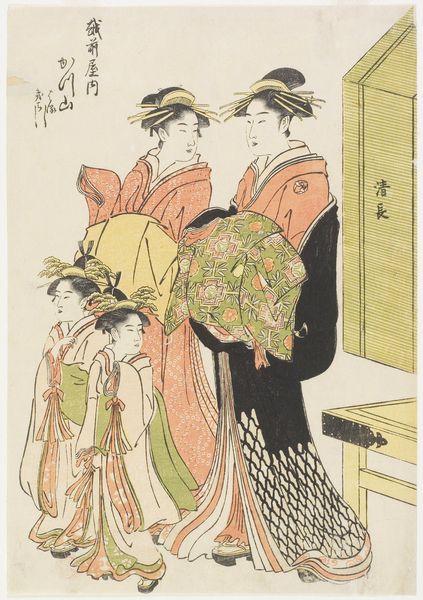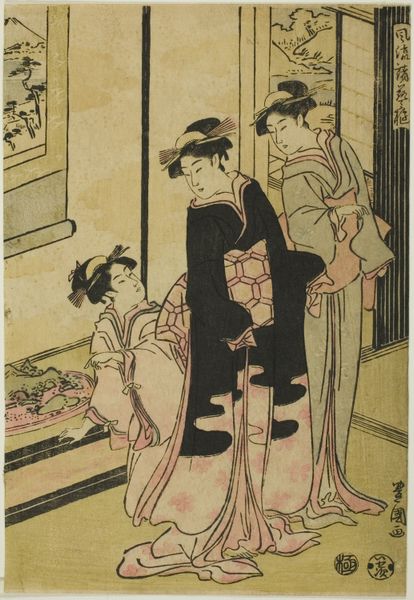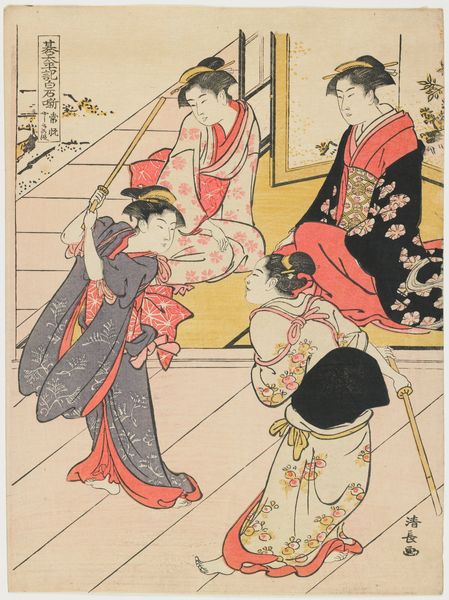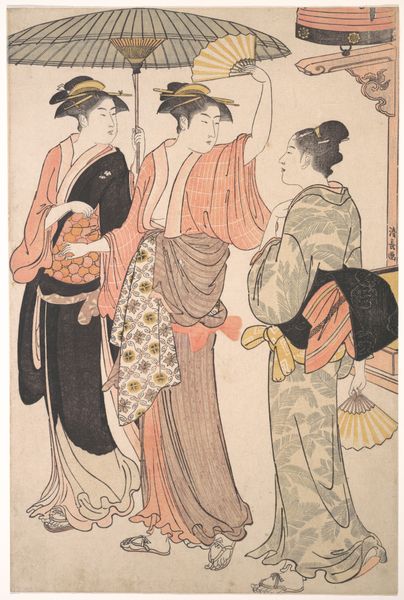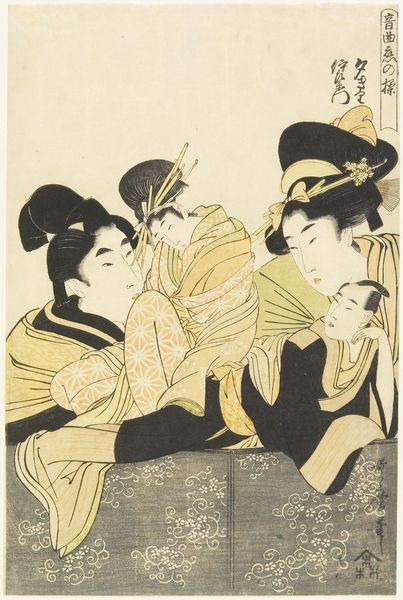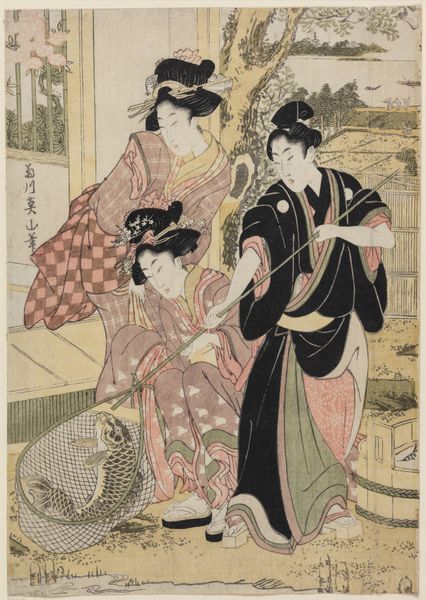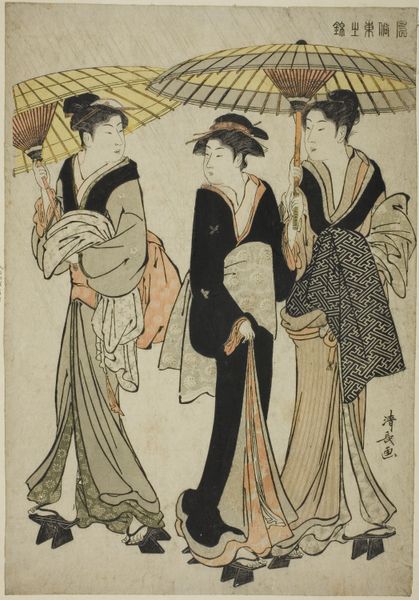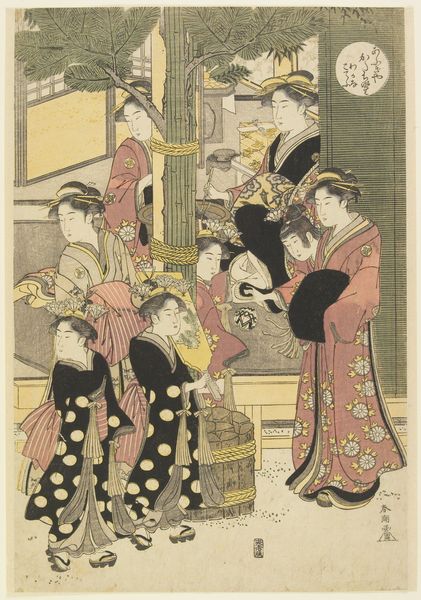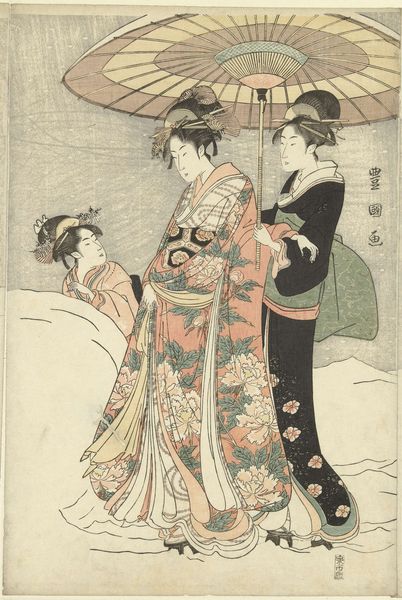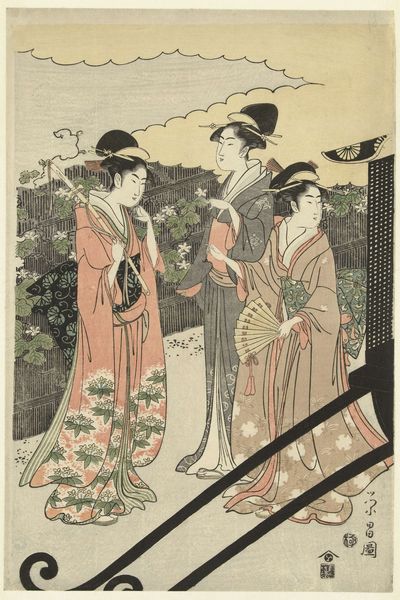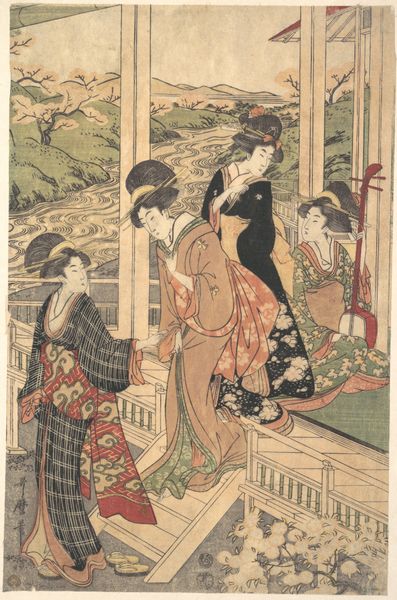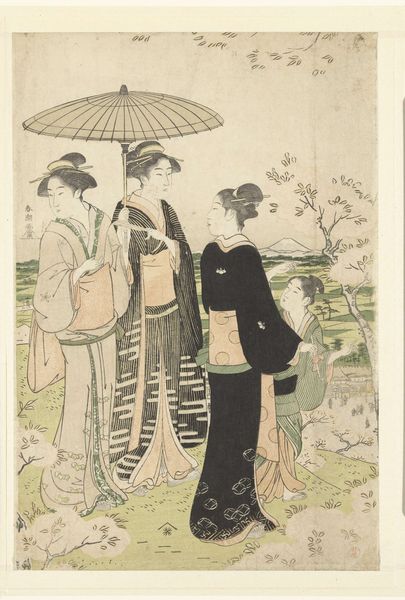
Komurasaki of the Kadotamaya with Attendants Hatsune and Utano c. 1790
0:00
0:00
#
portrait
# print
#
asian-art
#
ukiyo-e
#
japan
#
genre-painting
Dimensions: 36.5 × 25.3 cm (14 3/8 × 9 7/8 in.)
Copyright: Public Domain
Curator: Welcome. Here we have a color woodblock print called "Komurasaki of the Kadotamaya with Attendants Hatsune and Utano," made around 1790 by Chōbunsai Eishi. It's currently held here at The Art Institute of Chicago. Editor: The immediate impression is one of elegance tinged with restraint. There's a quiet drama in the color choices – muted purples and creams alongside striking black – and a real sense of contained energy. Curator: As an ukiyo-e piece, it captures the fleeting beauty and lifestyle of the Edo period. Komurasaki was a celebrated courtesan, and the print reveals a carefully constructed image, intended for public consumption and projecting particular ideas of feminine allure. Editor: The cherry blossoms on the kimono – we see them repeated in a stylized form. A potent symbol, of course, but how much were such emblems markers of identity, status, aspirations? The patterning is just wonderful – dizzying even! It almost feels coded with deeper meaning. Curator: The specific arrangements of such symbols—flower types, motifs, patterns—acted as signifiers of social standing, personal taste, even political affiliations at the time, certainly speaking to the intersectional forces at play. What seems like decoration is, in fact, a powerful tool for communicating within complex societal norms. The women have, or had, agency even in constraints. Editor: Note too the almost serene expression on Komurasaki’s face – it suggests a self-possession but also a submission to cultural expectations. I find it incredibly layered psychologically, to consider what it represented then, as well as the ripples of its meaning across the centuries to us today. Curator: Exactly. What Eishi achieved was capturing both individual likeness and symbolic weight, so these figures aren't just portraits, they’re embodiments of a social moment and a constant, persistent feminine cultural force. Editor: A force of tradition as well as commerce and control… A remarkable synthesis. Thanks for the insights! Curator: My pleasure. Hopefully that context will encourage viewers to appreciate the woodblock in a fresh way.
Comments
No comments
Be the first to comment and join the conversation on the ultimate creative platform.
